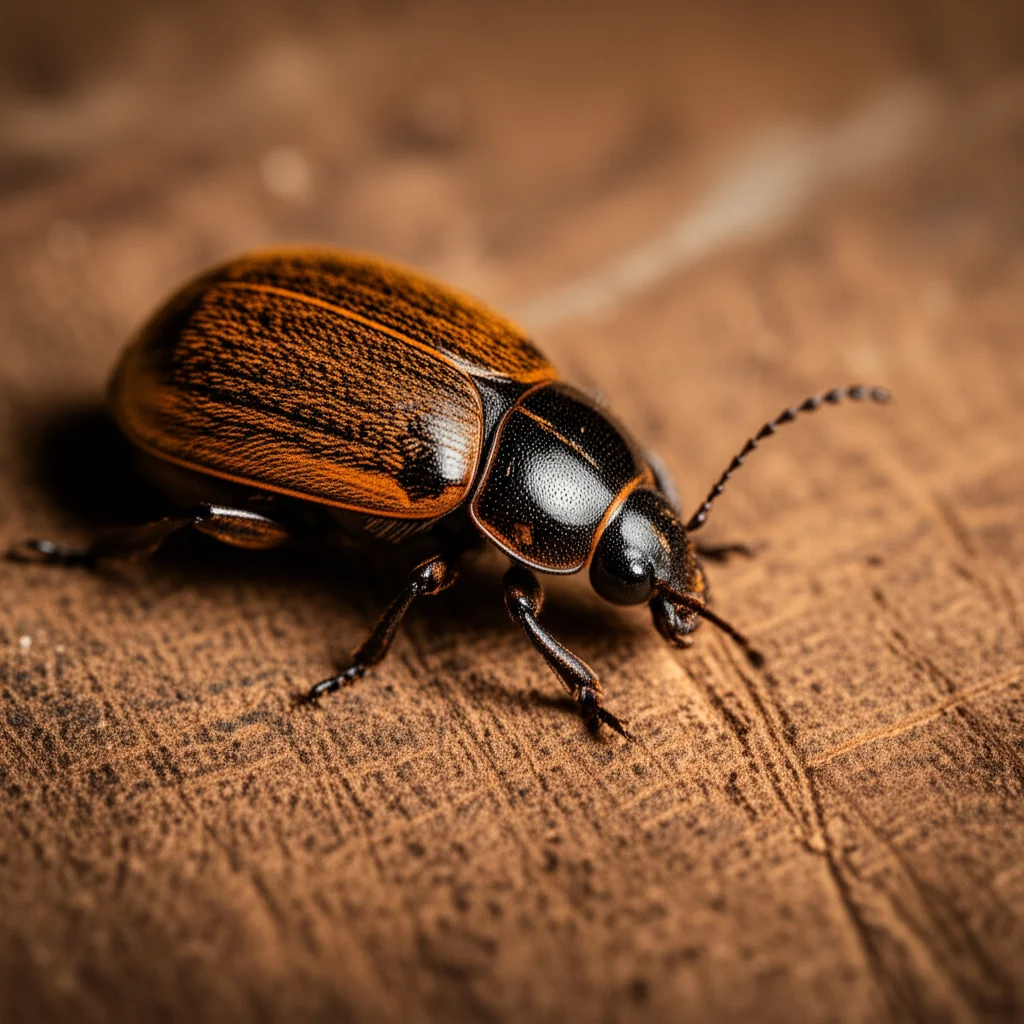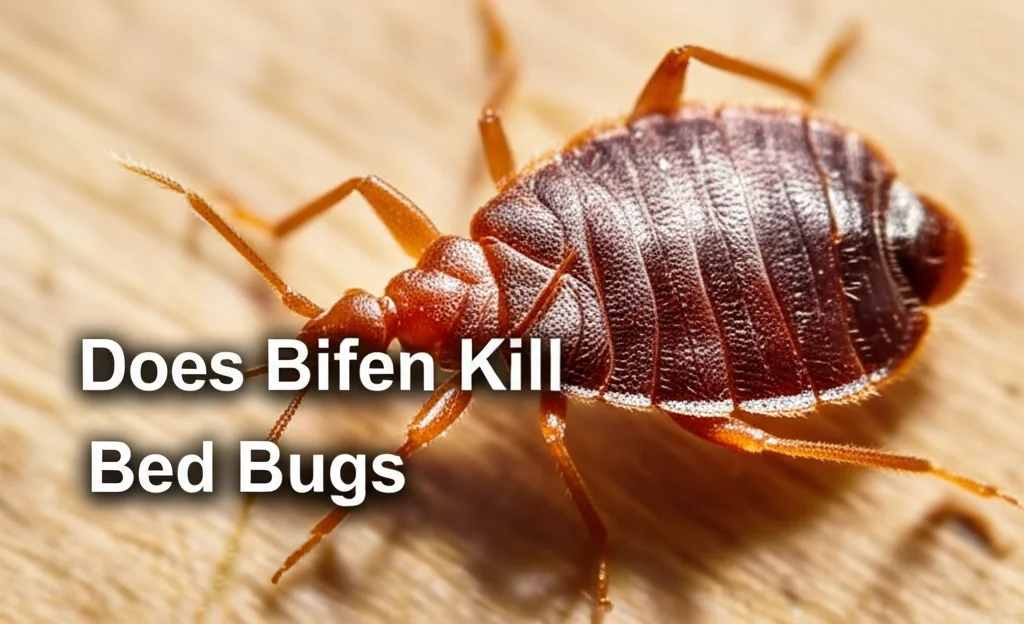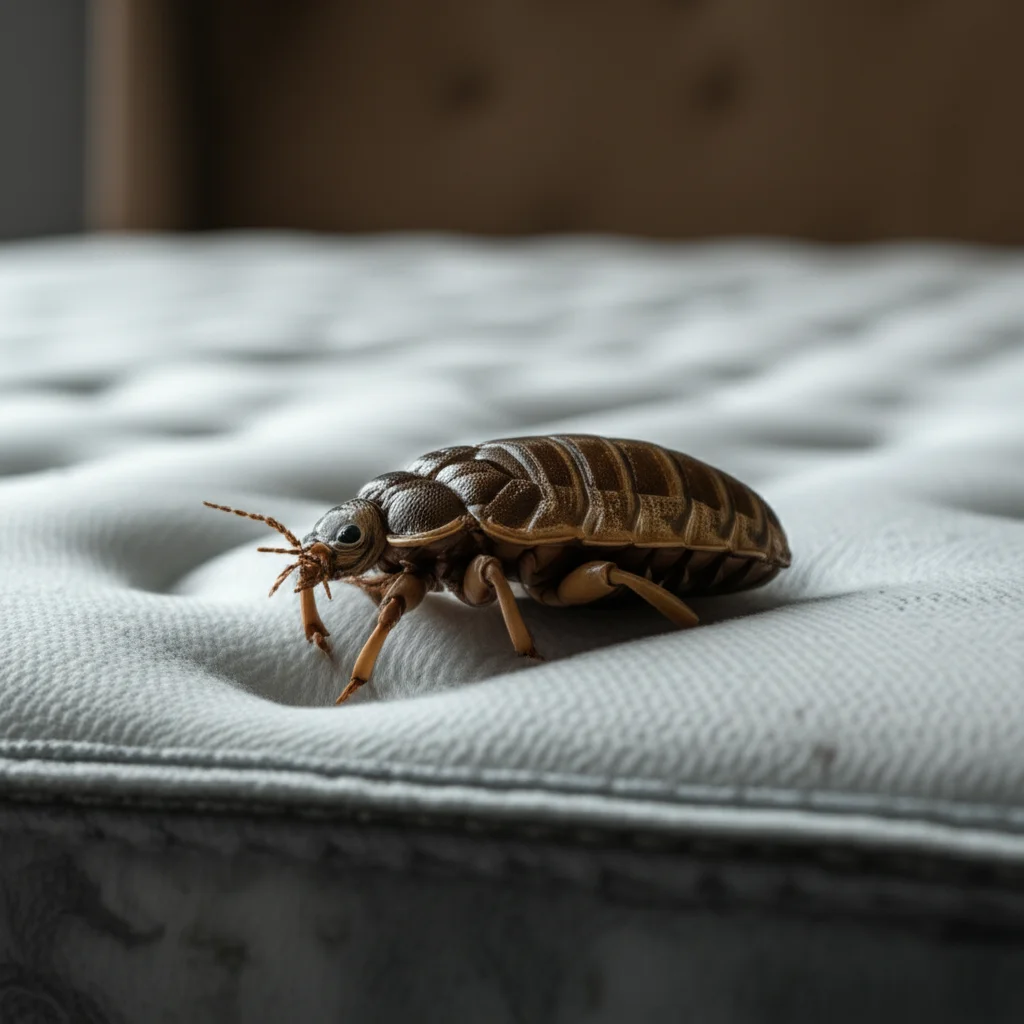· Todd Martin · Pest Control · 19 min read
Why Do We Get Carpet Beetles

Why Do We Get Carpet Beetles: Understanding & Prevention
Imagine walking into your room and spotting tiny, dark beetles crawling across your carpet. Or worse, you discover small holes in your favorite wool sweater. This can be a sign of carpet beetles. Many people ask, “Why do we get carpet beetles?” These common household pests can cause significant damage to natural fibers in your home. Understanding why they appear is the first step to managing them. This article will explain what attracts them, how they enter, and what conditions allow them to thrive. We will also cover how to spot an infestation and provide clear steps to prevent and eliminate these unwanted guests.
Takeaway
Getting carpet beetles in your home is often due to accessible food sources and easy entry. To prevent and manage them:
- Keep your home clean, especially areas with natural fibers.
- Seal cracks and openings in your home’s structure.
- Inspect items brought into your house for any signs of pests.
- Regularly clean and store susceptible items properly.
Why Do We Get Carpet Beetles?
We get carpet beetles because our homes provide them with ideal food sources like natural fibers, pet dander, and dried food, combined with suitable living conditions and easy entry points. These pests seek out undisturbed areas where they can feed and reproduce without interruption.
Understanding Carpet Beetles: Small Pests, Big Problems
Carpet beetles are tiny insects, often no bigger than a pinhead. They belong to a family of beetles known as Dermestidae. Several types of carpet beetles exist, including varied carpet beetles, black carpet beetles, and furniture carpet beetles. They all share a common trait: their larvae feed on organic materials found in homes. These larvae are the main cause of damage.
Adult carpet beetles are usually oval-shaped and can be black, brown, or have mottled patterns of white, brown, and black. They are often found near windows, where they are drawn to light. However, the real problem lies with their larvae. These larvae are small, worm-like, and covered in bristly hairs. They are often hidden from plain sight, munching away on your belongings. They grow through several stages, shedding their skins as they get bigger. Finding these shed skins is a key sign of an infestation.
Carpet beetles go through a complete metamorphosis, meaning they have four life stages: egg, larva, pupa, and adult. The female beetle lays eggs in secluded places, often near food sources. The eggs hatch into larvae, which then cause all the damage. The larval stage can last for several months, sometimes even a year, depending on conditions and food availability. Once mature, the larvae pupate and then emerge as adult beetles. Adults typically live for a few weeks to a couple of months, mainly focusing on reproduction. The adult beetles might fly inside from outdoors or emerge from an existing infestation within your home. Knowing about their life cycle helps us understand why preventing them is important.
What Attracts Carpet Beetles? Primary Food Sources
Carpet beetles are scavengers by nature. They are drawn to homes because they offer an abundance of easily accessible food. Their diet primarily consists of animal products and natural fibers. If your home has these materials, it becomes an attractive target for these pests. Understanding their preferred diet is crucial to preventing an infestation.
Natural Fibers and Animal Products
The most common attractants for carpet beetles are natural fibers. These include:
- Wool: Carpets, rugs, blankets, and clothing made of wool are prime targets.
- Silk: Delicates like silk scarves, drapes, and upholstery can be damaged.
- Fur and Leather: Items like fur coats, leather goods, and even taxidermied animals are vulnerable.
- Feathers: Down comforters, pillows, and decorative items with feathers provide food.
- Animal Hairs: Pet hair, especially pet dander found in carpets and furniture, is a significant food source. This includes dog and cat hair that collects in corners and under furniture.
- Insects: Dead insects, even tiny ones that accumulate in window sills or light fixtures, can provide a meal for carpet beetle larvae.
These materials contain keratin, a protein that carpet beetle larvae can digest. Your home provides a steady supply of these items. If these materials are stored undisturbed for long periods, they become ideal breeding grounds. This is why areas like closets, attics, and storage boxes are often hot spots for these pests. Remember that carpet beetles typically prefer dirty materials, as these often contain more natural oils and debris, making them tastier and more nutritious for the larvae. You can learn more about what carpet beetles hate if you are looking for ways to repel them effectively.
Food Crumbs and Spills
Beyond fibers, carpet beetles also feed on various dried food products. While they do not usually target fresh food in your pantry, they will readily consume spilled items. These can include:
- Cereal crumbs: Small bits of cereal left on the floor or under furniture.
- Pasta and grains: Unsealed packages of dried pasta, rice, or oats.
- Pet food: Spilled dry pet food, especially in hidden areas.
- Spices: Dried spices or herbs that have fallen from shelves.
Even tiny amounts of these food items can sustain a carpet beetle population. Regular cleaning, especially in kitchens and dining areas, helps remove these potential food sources. This includes cleaning under appliances and along baseboards where crumbs often collect. Keeping your living spaces tidy and free of food debris helps to reduce the appeal of your home to these pests. A proactive cleaning routine is key to preventing them from settling in.
Common Entry Points: How Carpet Beetles Enter Homes
Carpet beetles are not just born inside your home. They find ways to get in, often through small, unnoticed openings. Understanding their entry methods helps you seal off your home and prevent future infestations. These pests are very small, so even tiny gaps can be an invitation.
Exterior Openings
Your home’s exterior offers numerous entry points for adult carpet beetles. They are good flyers and can easily come in from outside.
- Cracks in Foundations and Walls: Small cracks can form in the foundation or walls of your home. These gaps serve as direct pathways for insects to enter.
- Gaps Around Windows and Doors: Weather stripping and seals around windows and doors can degrade over time. This creates small openings that adult carpet beetles can squeeze through. Make sure these seals are tight.
- Damaged Window Screens: Tears or holes in window screens offer an easy way for flying adult beetles to get inside, especially when windows are open.
- Vents and Chimneys: Unscreened vents (like attic or crawl space vents) or an uncapped chimney can be entry points. Adult beetles might fly down chimneys or through vents.
Regular inspection of your home’s exterior for these vulnerabilities is a good practice. Sealing any identified gaps or repairing screens can significantly reduce the chances of carpet beetles entering. You might find that carpet beetles, like many other pests, often try to enter homes as temperatures change, seeking shelter. While you might wonder do carpet beetles like cold, the reality is they often prefer to avoid extreme temperatures, making your home a comfortable haven.
Infested Items Brought Indoors
Carpet beetles often hitchhike their way into your home on items you bring inside. This is a very common way for infestations to start, even in a clean house.
- Used Furniture and Clothing: Second-hand items, especially those made of natural fibers, can harbor carpet beetle eggs or larvae. Always inspect such items carefully before bringing them into your living space.
- Cut Flowers and Plants: Adult carpet beetles feed on pollen. They can be found on cut flowers or outdoor plants you bring indoors. While they are usually just adults, they can lay eggs once inside.
- Pet Food and Animal Products: Bags of dry pet food or pet treats, if left unsealed or purchased from an infested source, can contain beetle larvae or eggs. Store all pet food in airtight containers.
- Bird Nests and Dead Insects: If a bird’s nest is built close to your house, or if dead insects accumulate in attics or wall voids, these can be breeding sites for carpet beetles. They might then migrate into your living areas.
Being mindful of what you bring into your home is crucial. A quick inspection can save you a lot of trouble later. Cleaning new items or placing them in quarantine for a short period might be good ideas. Maintaining overall cleanliness, including regular vacuuming, helps you keep an eye on potential pest activity. For comprehensive cleaning, especially in areas where these pests can hide, learning how to keep carpet clean is a valuable skill.
Ideal Living Conditions: Why Your Home is a Perfect Habitat
Beyond food and entry, certain conditions within your home make it an attractive and hospitable environment for carpet beetles to live and reproduce. These pests thrive in specific settings that often go unnoticed by homeowners. Understanding these preferred conditions helps you make your home less inviting.
Undisturbed and Dark Areas
Carpet beetles, particularly their larvae, prefer to live in places where they are not disturbed. They seek quiet, dark spots where they can feed and grow without interruption. This includes:
- Under Furniture: The undersides of heavy furniture, like sofas and beds, are perfect hiding spots. Dust and pet hair often collect here, providing both shelter and food.
- Closets and Storage Areas: Clothes and blankets stored in closets, especially those rarely used, offer an undisturbed feast. Attics, basements, and storage units are also common locations. Items packed away in boxes for long periods are particularly vulnerable.
- Along Baseboards and Wall Voids: The edges of carpets, where they meet the wall, and the gaps behind baseboards are favorite hiding places. These areas collect dust, pet hair, and lint, which are excellent food sources. Many times, carpet beetles will find these hidden spots. Learning how to clean carpet along walls can help disrupt these hidden habitats.
- Inside Air Vents and Ducts: These areas are often dark, dusty, and undisturbed, providing an ideal breeding ground if organic debris accumulates.
Regular cleaning, even in these out-of-sight areas, is essential to disrupt their habitat. Moving furniture and thoroughly cleaning beneath it can disturb existing populations.
Temperature and Humidity
Carpet beetles are adaptable, but they generally prefer environments that are neither too hot nor too cold. They thrive in moderate indoor temperatures.
- Moderate Temperatures: Standard indoor temperatures in most homes (typically 68-78°F or 20-25°C) are ideal for their development. Extreme heat or cold can be harmful to them, but typical room temperatures allow them to complete their life cycle efficiently. Interestingly, while extreme heat can eliminate them, you might wonder does heat kill carpet beetles for effective extermination methods.
- Humidity Levels: While they don’t require extremely high humidity, consistently dry environments are not preferred. A moderate humidity level helps their eggs and larvae survive. Homes that are sometimes humid, perhaps due to lack of ventilation or seasonal changes, can be more attractive.
Maintaining consistent indoor conditions and ensuring good ventilation can help. However, the most important factor is the presence of their food sources in these hidden, undisturbed spots. Removing these food sources makes the environment less desirable, regardless of temperature or humidity. For areas that are difficult to clean thoroughly, knowing how to deep clean carpet without machine can be very helpful in reaching those hidden spots where carpet beetles thrive.
Recognizing an Infestation: Signs of Carpet Beetles
Finding a single carpet beetle does not always mean a full infestation. However, knowing the signs of a larger problem can help you act quickly. Early detection is key to preventing widespread damage. It is important to look beyond just the adult beetles themselves.
Damaged Items and Visible Evidence
The most obvious sign of a carpet beetle problem is damage to your belongings. This damage is caused by the larvae, not the adult beetles.
- Holes in Fabrics: Look for irregular holes in carpets, rugs, clothing (especially woolens, silks, and furs), upholstery, and blankets. Unlike moth damage, which often appears in concentrated areas, carpet beetle damage can be more scattered or appear as thinning patches.
- Thin or Bare Spots on Carpets: On carpets or rugs, you might notice areas where the pile appears thinned or completely eaten away. These bald spots are a clear indicator of larval feeding activity.
- Fecal Pellets: As the larvae feed, they leave behind tiny, sand-like fecal pellets. These are often the same color as the material they are eating, making them hard to spot. You might find them in dust or accumulated debris in infested areas.
- Shed Skins (Larval Casings): One of the clearest signs is the presence of shed larval skins. As carpet beetle larvae grow, they shed their outer casings several times. These empty, brittle skins look like small, brownish, hairy husks. They are often found near damaged areas, under furniture, or in dusty corners. These casings might be mistaken for dead insects.
When you notice these signs, it is important to investigate further. Look in dark, undisturbed areas. Move furniture and check under rugs. Pay close attention to areas where pet hair collects, as this is a common food source for the larvae. If you find small spots of damage, especially on your carpet, you may need to learn how to spot clean carpet to address them immediately. For older or more stubborn stains or marks, knowing how to clean old stains from carpet can also be useful.
Sightings of Beetles and Larvae
While the damage is a key sign, seeing the pests themselves confirms an infestation.
- Adult Carpet Beetles: Adult beetles are often found near windows or light fixtures. They are attracted to light as they prepare to fly outside for nectar. Seeing them indoors, especially in multiple locations, suggests they are emerging from inside your home. They are small, typically dark, and can vary in pattern.
- Carpet Beetle Larvae: Finding the larvae themselves is a definite sign. They are small, worm-like, and typically brown or reddish-brown with bristly hairs. They move slowly and tend to curl up when disturbed. You might find them in areas with accumulated dust and debris, such as under furniture, in closet corners, or along baseboards. They might also be present in cracks and crevices of wooden floors.
If you observe any of these signs, it’s time to take action. Ignoring them allows the infestation to grow, leading to more widespread damage. Early identification helps you target your cleaning and pest control efforts more effectively.
Preventing Carpet Beetles: Proactive Home Protection
Preventing carpet beetle infestations is far easier than eliminating them. The key is to make your home less attractive to these pests. This involves a combination of consistent cleaning, proper storage, and sealing potential entry points. A proactive approach saves you time and prevents damage to your belongings.
Regular and Thorough Cleaning
Cleanliness is your best defense against carpet beetles. These pests thrive on dust, debris, and undisturbed organic matter.
- Vacuum Regularly: Vacuum all carpets, rugs, and upholstered furniture frequently. Pay special attention to areas under furniture, along baseboards, and in corners where lint, pet hair, and crumbs accumulate. These are prime feeding grounds for larvae. A thorough vacuuming can remove eggs, larvae, and their food sources. Consider vacuuming at least once a week, more often if you have pets. Knowing how to clean a whole room of carpet effectively ensures you cover all areas where these pests might hide.
- Clean Hard-to-Reach Areas: Use your vacuum’s attachments to clean cracks, crevices, and areas behind and under heavy appliances. These are often overlooked spots where dust and debris collect.
- Launder Fabrics: Regularly wash or dry-clean all washable natural fiber items like blankets, throws, curtains, and pet bedding. Use hot water when possible, as heat kills all life stages of carpet beetles.
- Dust and Wipe Surfaces: Dust regularly, especially in closets, shelves, and drawers where clothes and other susceptible items are stored. Wipe down shelves and inside drawers to remove any accumulated dust or debris.
Proper Storage and Inspection
How you store items and what you bring into your home greatly impacts your risk of infestation.
- Store Susceptible Items: Store woolens, furs, silks, and other natural fiber items that are not in regular use in airtight containers or garment bags. Plastic bins with tight-fitting lids are excellent for this. Before storing, ensure items are clean. Dirty clothing can still attract pests, even in sealed containers.
- Inspect Second-Hand Items: Always thoroughly inspect any second-hand furniture, clothing, or decorative items before bringing them into your home. Look for signs of damage, larvae, or shed skins. If possible, clean or treat these items before introducing them to your living space.
- Check Pet Products: Inspect pet food bags and other pet-related items for any signs of beetle activity. Store dry pet food in sealed containers. Regularly clean pet bedding.
Sealing Entry Points
Preventing adult beetles from entering your home reduces the chance of them laying eggs indoors.
- Seal Cracks and Gaps: Caulk or seal any cracks or openings in your home’s foundation, walls, and around windows and door frames.
- Repair Screens: Fix any tears or holes in window and door screens. Ensure they fit snugly.
- Cover Vents: Use fine-mesh screens on attic vents and other exterior openings to prevent insects from entering.
- Clean Chimneys: If you have a chimney, consider having it professionally cleaned and capped to prevent pests from coming down.
By consistently applying these preventive measures, you create an environment that is far less hospitable to carpet beetles, significantly reducing your risk of an infestation.
Eliminating Carpet Beetles: Effective Control Methods
If you discover a carpet beetle infestation, prompt and thorough action is necessary to eliminate them. Simply cleaning visible areas is often not enough; you need a multi-faceted approach to address all life stages and hidden populations.
Comprehensive Cleaning and Treatment
The most effective initial step in eradication is intensive cleaning. This physically removes larvae, eggs, and food sources.
- Targeted Vacuuming: Use a powerful vacuum cleaner with attachments to thoroughly vacuum all carpets, rugs, upholstered furniture, and draperies. Pay extra attention to hidden areas like under cushions, along baseboards, in closets, and under heavy furniture. Don’t forget to vacuum inside drawers and cabinets. Dispose of the vacuum bag immediately after use by sealing it in a plastic bag and placing it in an outdoor trash bin.
- Laundering and Dry Cleaning: Wash all infested clothing, linens, blankets, and other washable natural fiber items in hot water if the fabric allows. Hot water (at least 120°F or 49°C) effectively kills larvae and eggs. For delicate items or those that cannot be washed, dry cleaning is an effective alternative. Items that cannot be washed or dry-cleaned can be tumble-dried on high heat for at least 30 minutes.
- Steam Cleaning: For carpets and upholstery, steam cleaning can be highly effective. The high heat from steam penetrates fibers and kills all life stages of carpet beetles. Make sure the equipment delivers enough heat to be effective. For those wondering, does heat kill carpet beetles is a common question, and the answer is yes, heat is an effective method.
- Pest-Specific Cleaning: After thorough vacuuming, you can use specialized cleaning solutions where appropriate. For example, some people suggest using white vinegar as part of their cleaning routine. You can learn more about what do carpet beetles hate for natural repellents or cleaning agents that may help.
Chemical Treatments and Professional Help
Sometimes, cleaning alone is not enough, especially for severe or persistent infestations.
- Insecticide Dusts and Sprays: For areas where carpet beetles are prevalent and can’t be easily cleaned, you can use insecticides specifically labeled for carpet beetles. Dusts like diatomaceous earth can be applied to cracks, crevices, wall voids, and under appliances. Diatomaceous earth is a natural powder that dehydrates insects. Sprays, usually permethrin or bifenthrin based, can be applied to infested areas, but always follow label instructions carefully. Ensure proper ventilation and keep pets and children away from treated areas until dry.
- Insect Growth Regulators (IGRs): IGRs disrupt the life cycle of insects, preventing larvae from developing into adults. These can be used in conjunction with other treatments to provide long-term control.
- Cold Treatment: For small, infested items that cannot be washed or treated with heat, freezing can be effective. Place the items in a sealed plastic bag and put them in a freezer at 0°F (-18°C) or below for at least 72 hours. This extreme cold kills the larvae and eggs. The question of do carpet beetles like cold is relevant here, as cold is used as an eradication method.
- Professional Pest Control: If the infestation is widespread, severe, or if you are having trouble eliminating them yourself, consider hiring a professional pest control service. They have access to stronger treatments and expert knowledge to identify hidden breeding sites and implement a targeted eradication plan. Professionals can safely apply more potent insecticides and offer long-term solutions.
Remember that persistence is key. Carpet beetles have long life cycles, and eggs can hatch weeks after initial treatment. Continue monitoring for signs of activity and repeat cleaning and treatment steps as necessary.
FAQ Section
Are carpet beetles harmful to humans or pets?
Carpet beetles are not harmful to humans or pets in terms of biting or spreading disease. Their main impact is property damage. They destroy natural fibers like wool, fur, and silk, found in carpets, clothing, and upholstered furniture. Some people might experience skin irritation or allergic reactions from contact with the bristly hairs on larvae or their shed skins.
How long do carpet beetles live?
The lifespan of a carpet beetle varies depending on the species and environmental conditions. The larval stage, which causes the damage, can last anywhere from several months to two years. Adult carpet beetles typically live for only a few weeks to a couple of months, focusing primarily on reproduction before they die.
Can carpet beetles infest an entire home?
Yes, if left unchecked, carpet beetles can spread and infest an entire home. They can move from one room to another, especially if food sources like natural fibers or pet dander are widely available. Infestations often start in one area but can become widespread, affecting carpets, clothing, and stored items throughout the house.
What do carpet beetle larvae eat?
Carpet beetle larvae primarily eat natural fibers containing keratin. This includes wool, silk, fur, leather, and feathers. They also feed on pet dander, dead insects, lint, and dried food crumbs. They do not eat synthetic fibers. The larvae cause all the damage; adult beetles mostly feed on pollen outdoors.





